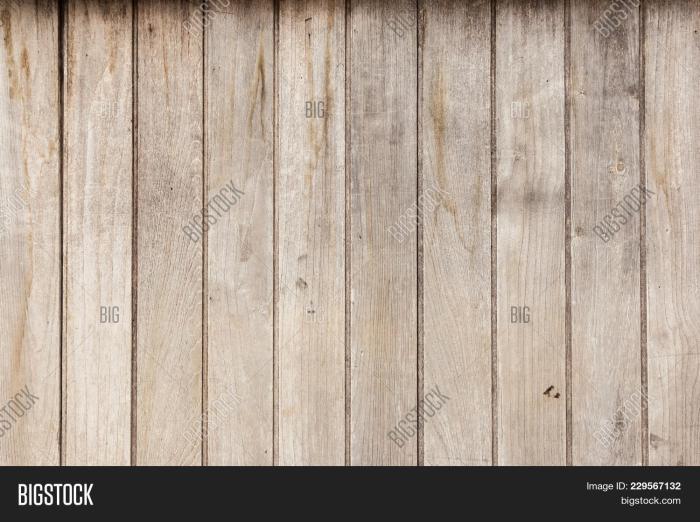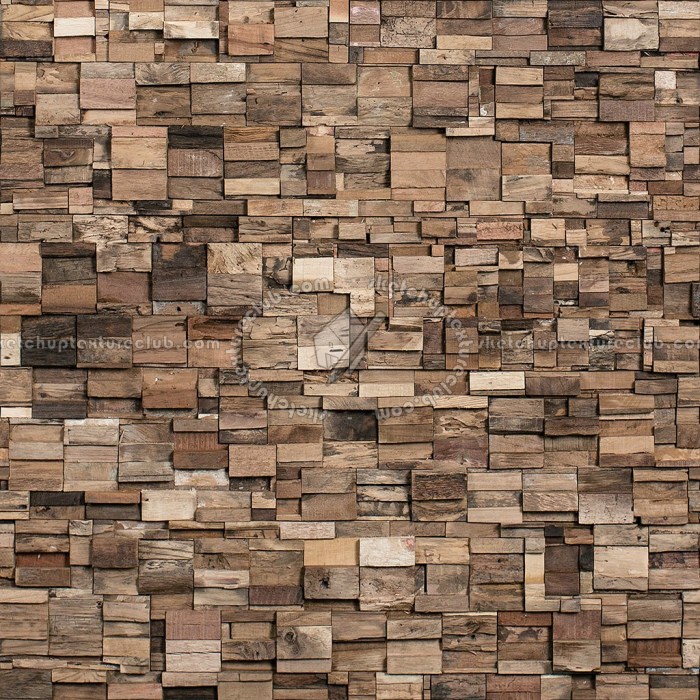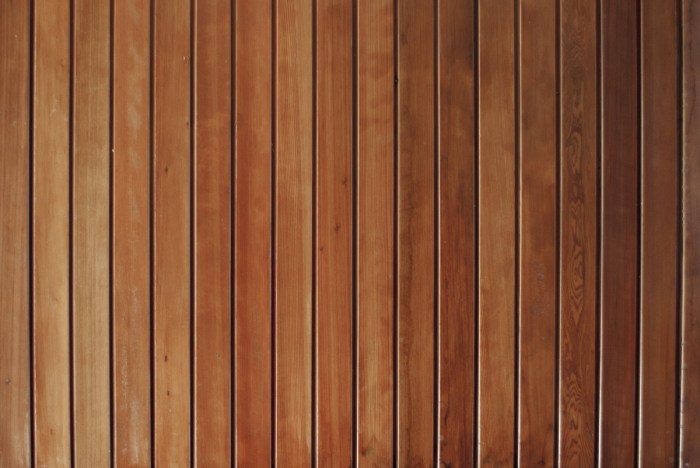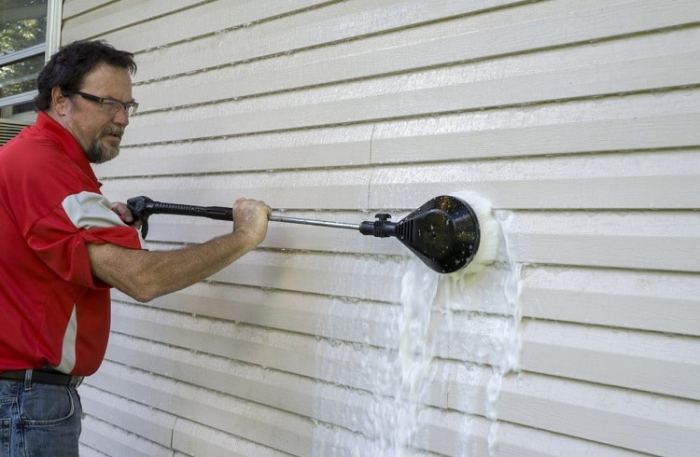Veneer siding offers a captivating blend of aesthetics and practicality, transforming homes with its diverse textures and colors. From the classic charm of wood to the modern appeal of fiber cement, choosing the right veneer siding involves careful consideration of material properties, installation techniques, and long-term maintenance. This comprehensive guide delves into every aspect of veneer siding, empowering you to make informed decisions for your next project. We’ll explore the various types available, their respective pros and cons, installation processes, maintenance needs, and even the environmental impact. By the end, you’ll possess the knowledge necessary to confidently select and install the perfect veneer siding for your home, enhancing both its curb appeal and longevity.
Types of Veneer Siding

Veneer siding, a popular exterior cladding choice, offers a diverse range of materials, each with unique properties impacting durability, aesthetics, and cost. Understanding these differences is crucial for homeowners and builders alike when selecting the optimal siding for a project. The choice depends heavily on factors such as budget, desired aesthetic, climate, and maintenance preferences.
Material Options for Veneer Siding
Veneer siding is available in a variety of materials, each offering a distinct set of advantages and disadvantages. Common choices include wood, vinyl, fiber cement, and engineered wood. These materials differ significantly in their longevity, maintenance requirements, and overall cost.
Durability and Lifespan of Veneer Siding Materials
The lifespan of veneer siding varies considerably depending on the material used. Wood siding, while aesthetically pleasing, requires regular maintenance to prevent rot, insect infestation, and weathering. With proper care, wood siding can last 20-50 years, but neglecting maintenance can drastically shorten its lifespan. Vinyl siding, on the other hand, is known for its low maintenance and long lifespan, often lasting 20-40 years or even longer with minimal upkeep. Fiber cement siding boasts exceptional durability and resistance to fire, insects, and moisture, typically lasting 50 years or more. Engineered wood siding, a composite material, offers a good balance between durability and cost, with a lifespan generally ranging from 20-30 years.
Aesthetic Considerations and Architectural Suitability
The aesthetic appeal of veneer siding is a key factor in its selection. Wood siding, particularly cedar and redwood, offers a classic, natural look that complements traditional and rustic architectural styles. Its varied grain patterns and natural color variations provide a warm, inviting feel. Vinyl siding, available in a wide array of colors and textures, provides versatility, allowing for modern or traditional aesthetics. Its smooth finish is easy to clean and maintain. Fiber cement siding can mimic the look of wood or stucco, offering a clean, sophisticated appearance suitable for various architectural styles. Engineered wood siding offers a range of textures and colors, allowing for flexibility in design.
Comparison of Veneer Siding Materials
The following table summarizes the cost, maintenance, and insulation properties of four common veneer siding materials:
| Material | Cost (per sq ft) | Maintenance | Insulation (R-value) |
|---|---|---|---|
| Wood | $4-$15+ | High (regular painting, staining, and repairs) | Variable, depending on thickness and type of wood |
| Vinyl | $2-$8 | Low (occasional cleaning) | Low (R-value typically around 0.5-1.0) |
| Fiber Cement | $6-$15+ | Medium (periodic cleaning and occasional repairs) | Medium (R-value typically around 0.6-2.0) |
| Engineered Wood | $3-$10 | Medium (occasional cleaning and minor repairs) | Medium (R-value varies depending on the specific product) |
Installation Process of Veneer Siding

Installing wood veneer siding offers a beautiful and durable exterior finish. Success hinges on meticulous preparation and precise execution. This guide details the process, tools, and best practices for a professional-looking result.
Tools and Equipment Required for Veneer Siding Installation
Proper tools are essential for efficient and accurate veneer siding installation. A lack of the right equipment can lead to delays, poor workmanship, and ultimately, a subpar finish. The following list covers the essential tools for a successful installation.
- Measuring tape and pencil: Accurate measurements are crucial for planning and cutting the siding.
- Circular saw or miter saw: Precise cuts are necessary for a clean, professional look. A miter saw is preferred for angled cuts.
- Hammer and nail gun (optional but recommended): A nail gun significantly speeds up the installation process, while a hammer offers more control for specific placements.
- Level: Ensuring vertical and horizontal alignment is paramount for a visually appealing and structurally sound installation.
- Safety glasses and gloves: Protecting your eyes and hands from debris and sharp edges is crucial for safety.
- Caulk gun and exterior-grade caulk: Caulk seals gaps and provides weather resistance.
- J-channel and corner trim: These provide a clean finish at the edges and corners of the installation.
- Ladder and scaffolding (if necessary): Safe and stable access to the entire wall surface is essential.
Preparing the Wall Surface for Veneer Siding Installation
Thorough wall preparation is critical for a long-lasting and aesthetically pleasing siding installation. Neglecting this step can lead to problems such as uneven siding, gaps, and premature deterioration.
The process typically involves:
- Inspection and Repair: Carefully inspect the wall for any damage, such as cracks, rot, or loose materials. Repair all damage using appropriate methods before proceeding.
- Cleaning: Remove any dirt, debris, loose paint, or other contaminants from the wall surface. Pressure washing is often effective but requires caution to avoid damaging the underlying structure.
- Sheathing (if necessary): If the existing wall sheathing is damaged or inadequate, replace or reinforce it before installing the siding. This provides a solid foundation for the veneer.
- Moisture Barrier: Install a suitable moisture barrier, such as housewrap, to protect the wall from moisture penetration. This is particularly important in areas with high humidity or rainfall.
- Flashing: Install flashing around windows, doors, and other openings to prevent water from entering the wall cavity.
Step-by-Step Veneer Siding Installation Guide
The installation process follows a systematic approach to ensure a professional and durable finish.
- Layout and Measurement: Begin by accurately measuring the wall surface and planning the siding layout. Consider the placement of windows, doors, and corners.
- Installation of Starter Strips: Install starter strips at the bottom of the wall to provide a level and consistent base for the siding. Ensure they are properly aligned and secured.
- Siding Installation: Install the siding panels, overlapping each panel according to the manufacturer’s instructions. Use nails or staples to secure the panels to the wall. Maintain consistent spacing and alignment throughout the process.
- Corner and J-Channel Installation: Install corner trim and J-channel to create a neat and weathertight finish at corners and edges. Ensure proper alignment and sealing.
- Caulking: Apply exterior-grade caulk to seal gaps and joints between siding panels and trim pieces. This prevents water penetration and improves the overall durability of the installation.
- Final Inspection: Conduct a thorough inspection of the completed siding installation to ensure that all panels are properly aligned, secured, and sealed. Address any imperfections before the project is considered complete.
Veneer Siding Installation Checklist
A comprehensive checklist helps ensure a successful installation and minimizes common errors.
- All necessary tools and materials are on hand.
- Wall surface is properly prepared and cleaned.
- Moisture barrier and flashing are correctly installed.
- Starter strips are installed level and plumb.
- Siding panels are installed according to manufacturer’s instructions.
- Corner and J-channel trim are installed correctly.
- All gaps and joints are properly caulked.
- Final inspection confirms proper alignment, security, and sealing.
Maintenance and Repair of Veneer Siding
Proper maintenance is crucial for extending the lifespan and preserving the aesthetic appeal of veneer siding. Regular care prevents costly repairs and ensures your home retains its curb appeal for years to come. Different veneer materials require specific maintenance routines, and understanding these differences is key to successful upkeep. Ignoring maintenance can lead to significant damage and expensive repairs down the line.
Routine Maintenance Tasks for Different Veneer Siding Types
Regular cleaning is paramount for all veneer siding types. This involves removing dirt, debris, and cobwebs using a soft brush, hose, and mild detergent solution. For wood veneer siding, consider using a specialized wood cleaner to preserve its natural finish. Avoid high-pressure washing, which can damage the siding’s surface. Painting is often necessary for wood and some composite veneers to maintain color and protect against weathering. Repainting should be done according to the manufacturer’s recommendations, typically every 5-10 years depending on the climate and paint type. For vinyl and fiber cement siding, cleaning is typically sufficient, with occasional spot cleaning for stains. Inspecting the siding regularly for loose or damaged panels is vital for all types.
Common Problems Encountered with Veneer Siding
Exposure to harsh weather conditions is a major contributor to veneer siding damage. Sun exposure can cause fading and cracking in wood and composite veneers, while extreme temperature fluctuations can lead to expansion and contraction, potentially causing warping or cracking. Moisture intrusion, whether from rain, snow, or ground water, can cause rot in wood veneers and lead to mold and mildew growth. Insect infestations, particularly in wood siding, can cause significant damage if left untreated. Termites and carpenter ants can burrow into the wood, weakening its structure and creating entry points for moisture. Impact damage, from hail or accidental collisions, can also lead to cracks, dents, and other visible imperfections.
Repairing Minor Damage to Veneer Siding
Minor damage, such as small cracks or dents, can often be repaired without replacing entire panels. For wood veneer siding, wood filler can be used to repair small cracks and holes. After the filler has dried, sand it smooth and repaint the area to match the surrounding siding. For vinyl siding, minor dents can sometimes be repaired by carefully heating the affected area with a hairdryer to allow it to reshape. Larger cracks or holes may require replacing the damaged section. This involves carefully removing the damaged panel and installing a new one, ensuring proper alignment and sealing. For fiber cement siding, minor repairs may involve patching with a cement-based repair compound, followed by sanding and painting. Always refer to the manufacturer’s instructions for specific repair recommendations.
Preventing Common Issues Leading to Veneer Siding Repairs
Regular inspections are crucial for preventing major repairs. Identifying and addressing minor issues early can prevent them from escalating into more significant problems. Proper drainage around the foundation is essential to prevent moisture from accumulating against the siding. Ensure gutters and downspouts are clean and functioning correctly to divert water away from the house. Regularly trim overhanging branches to prevent them from scraping against the siding and causing damage. For wood siding, consider applying a protective sealant or stain to repel moisture and protect against insect infestations. Promptly address any signs of insect infestation to prevent widespread damage. Consider using pest control measures as needed.
Environmental Impact of Veneer Siding

Veneer siding, while offering aesthetic appeal and durability, carries environmental implications stemming from its material sourcing, manufacturing processes, and eventual disposal. Understanding these impacts is crucial for making informed choices about sustainable building practices. This section explores the environmental footprint of various veneer siding materials, comparing their sustainability to other options and highlighting environmentally friendly alternatives.
Carbon Footprint of Veneer Siding Materials
The carbon footprint of veneer siding varies significantly depending on the source material. Wood veneer, sourced from sustainably managed forests, generally has a lower carbon footprint compared to materials with high embodied energy, such as vinyl or certain composite materials. However, the transportation distance and processing methods involved also contribute to the overall carbon emissions. For example, locally sourced hardwood veneer will likely have a smaller carbon footprint than imported softwood veneer due to reduced transportation emissions. The manufacturing process, including drying, cutting, and finishing, also adds to the overall carbon emissions. The use of energy-efficient technologies in manufacturing can mitigate this impact. For instance, a factory using renewable energy sources will have a lower carbon footprint than one relying solely on fossil fuels.
Recyclability and End-of-Life Management of Veneer Siding
The recyclability of veneer siding is dependent on the specific material and the availability of recycling infrastructure. Wood veneer, being a natural material, can biodegrade over time, although this process can be slow. Some manufacturers are exploring innovative ways to recycle wood veneer waste into new products, reducing landfill waste. However, many existing veneer siding products lack efficient recycling pathways, leading to disposal in landfills. In contrast, some composite materials may contain recycled content, but their end-of-life management often presents challenges due to the complex mixture of materials. Recycling rates for these composite materials are generally lower compared to other building materials.
Comparison of Wood Veneer Siding to Other Siding Materials
Wood veneer siding, when sourced responsibly, offers several environmental advantages compared to some alternatives. For example, compared to vinyl siding, which is derived from petroleum, wood veneer has a lower carbon footprint and is biodegradable. However, compared to fiber cement siding, which is often made from recycled materials, wood veneer might have a higher embodied energy due to the harvesting and processing involved. The sustainability of each material hinges on responsible sourcing, manufacturing, and end-of-life management practices. For instance, sustainably harvested wood veneer with a long lifespan significantly reduces the overall environmental impact compared to rapidly depleting resources or materials with short lifespans and limited recyclability.
Environmentally Friendly Options in Veneer Siding
Several factors contribute to the environmental friendliness of veneer siding. Choosing veneer from sustainably managed forests certified by organizations like the Forest Stewardship Council (FSC) is paramount. This ensures that the wood is harvested responsibly, minimizing deforestation and promoting forest health. Furthermore, selecting veneer species with faster growth rates reduces the time needed to produce mature timber. Additionally, opting for manufacturers employing energy-efficient production methods and utilizing recycled materials in the manufacturing process minimizes the environmental impact of the final product. The use of water-based finishes and low-VOC (volatile organic compounds) paints further reduces the impact on air quality.
Pros and Cons of Veneer Siding Materials from an Environmental Perspective
The environmental impact of veneer siding depends heavily on the specific material and its lifecycle. Below is a summary of the pros and cons of various common veneer siding materials from an environmental perspective:
- Wood Veneer (from sustainably managed forests):
- Pros: Renewable resource, biodegradable, relatively low carbon footprint (if sustainably sourced), aesthetically pleasing.
- Cons: Requires careful forest management to avoid deforestation, transportation emissions can be significant, susceptibility to insect damage and decay.
- Bamboo Veneer:
- Pros: Rapidly renewable resource, high strength-to-weight ratio, relatively low carbon footprint.
- Cons: Can require significant water for cultivation in some regions, processing can involve chemicals.
- Recycled Plastic Veneer:
- Pros: Diverts plastic waste from landfills, durable and weather-resistant.
- Cons: Manufacturing process can be energy-intensive, may contain harmful chemicals, recyclability of the final product may be limited.
Veneer Siding Styles and Design Considerations
Veneer siding offers a remarkable degree of design flexibility, allowing homeowners and architects to create visually stunning and durable exteriors. The choice of style, color, texture, and integration with other materials significantly impacts the overall aesthetic and longevity of a building. Understanding these design considerations is crucial for achieving a cohesive and impactful architectural outcome.
The versatility of veneer siding extends beyond its practical benefits; it plays a pivotal role in shaping the character and style of a building. Careful selection and installation can dramatically enhance curb appeal and property value.
Veneer Siding Patterns and Designs
The arrangement of veneer siding panels creates distinct visual patterns that significantly influence the building’s appearance. Horizontal installation is the most common, providing a classic and clean look. Vertical installation, conversely, can create a sense of height and modernity. Staggered patterns, where panels are offset to create a more complex visual texture, offer a unique and visually interesting alternative. Brick-patterned veneer siding mimics the look of traditional brickwork, offering a timeless appeal. Other patterns, such as fish scale or shingle styles, add a distinct character, depending on the desired aesthetic.
Impact of Color and Texture
Color and texture are fundamental elements in shaping the overall aesthetic of a building. Light-colored veneer siding can make a building appear larger and brighter, while darker colors can create a more dramatic and imposing presence. The texture of the siding also plays a significant role. Smooth veneers offer a sleek, modern look, while rough-textured veneers can evoke a rustic or traditional feel. The interplay of color and texture can be used to create visual interest and highlight architectural features. For example, a contrast between light and dark siding can accentuate window frames or other architectural details.
Veneer Siding in Architectural Design
Veneer siding’s integration with other building materials is a key consideration in architectural design. It can be seamlessly combined with stone, brick, stucco, or metal to create visually appealing and structurally sound facades. For instance, stone veneer accents can be used to frame entrances or windows, while stucco can be used to complement the siding and create a more textured appearance. The choice of complementary materials depends on the overall architectural style and desired aesthetic. The skilled use of veneer siding in conjunction with other materials allows for the creation of complex and visually rich facades.
Selecting Veneer Siding for Different Architectural Styles
The selection of veneer siding should align with the overall architectural style of the building. For traditional styles, such as Colonial or Victorian, a wood veneer siding with a classic horizontal pattern and a natural color palette would be appropriate. Modern architectural styles often benefit from sleek, smooth veneers in neutral or bold colors, potentially in vertical or staggered patterns. Rustic styles, such as log cabins or mountain homes, are well-suited to rough-textured veneers that evoke a natural, organic feel, perhaps with a warm, earthy color palette. The successful integration of veneer siding relies on careful consideration of the building’s architectural style and the desired aesthetic.
Cost and Budget Considerations for Veneer Siding
Planning a veneer siding project requires careful consideration of the associated costs. Understanding the various expense components and factors influencing the overall price is crucial for creating a realistic budget and avoiding unexpected financial burdens. This section breaks down the cost structure of veneer siding projects, providing insights into material choices, labor rates, and methods for accurate budgeting.
Cost Breakdown of Veneer Siding Projects
The total cost of a veneer siding project comprises several key elements: material costs, labor costs, permits and inspections, and any additional expenses such as demolition or site preparation. Material costs vary widely depending on the type of veneer chosen (e.g., wood, fiber cement, vinyl), its quality, and the project’s size. Labor costs are determined by the contractor’s hourly rate, the project’s complexity, and the overall time required for installation. Permits and inspections are necessary in most jurisdictions and add to the overall expenditure. Finally, unforeseen expenses, such as repairing underlying damage to the wall structure, should be factored into the budget.
Factors Influencing Veneer Siding Costs
Several factors significantly impact the final cost of a veneer siding project. The type of veneer material is a primary driver; premium materials like natural wood or high-end fiber cement will naturally be more expensive than vinyl or less expensive wood options. The size of the project directly correlates with the quantity of materials and labor needed. Larger projects inherently incur higher costs. Labor rates vary geographically and depending on the contractor’s experience and reputation; skilled professionals often command higher fees. The complexity of the project, including features like intricate trim work or difficult-to-access areas, can increase both material and labor costs. Finally, the condition of the existing wall structure can necessitate additional work, such as repairs or demolition, thereby increasing the total cost.
Creating a Realistic Budget for Veneer Siding
Developing a realistic budget involves a systematic approach. Begin by accurately measuring the area requiring siding. Obtain detailed quotes from multiple reputable contractors, ensuring they specify the materials used and labor costs separately. Compare these quotes to identify fair market pricing. Include contingency funds (typically 10-20% of the estimated cost) to cover unforeseen expenses or potential price increases. Factor in the cost of permits and inspections, and any necessary site preparation or demolition work. Finally, create a payment schedule that aligns with the project’s progress, typically involving a down payment, progress payments, and a final payment upon completion. Thorough planning and transparency with the contractor will prevent cost overruns and ensure a smooth project.
Estimated Cost Range of Veneer Siding Options
The following table provides estimated cost ranges for various veneer siding options per square foot. These figures are averages and can vary significantly based on location, material quality, and labor costs. It’s crucial to obtain personalized quotes from local contractors for accurate pricing.
| Veneer Type | Low Cost Range ($/sq ft) | Mid-Range Cost ($/sq ft) | High Cost Range ($/sq ft) |
|---|---|---|---|
| Vinyl Siding | 2-4 | 4-6 | 6-8 |
| Fiber Cement Siding | 6-10 | 10-15 | 15-20 |
| Wood Siding (Cedar) | 8-12 | 12-18 | 18-25+ |
| Stone Veneer | 10-15 | 15-25 | 25-40+ |
Ultimately, the choice of veneer siding hinges on a careful balance of aesthetic preferences, budgetary constraints, and long-term maintenance considerations. Understanding the unique characteristics of each material—from the natural beauty of wood to the low-maintenance practicality of vinyl—is crucial for making an informed decision. This guide has equipped you with the knowledge to navigate the world of veneer siding, empowering you to transform your home’s exterior with a durable, stylish, and environmentally conscious choice. Remember to factor in the total cost of ownership, including installation and future maintenance, to ensure a successful and aesthetically pleasing outcome. Happy siding!
Helpful Answers
Can I install veneer siding myself?
While possible for some types, professional installation is often recommended for optimal results and warranty coverage. The complexity varies significantly depending on the siding material and your experience level.
How often should I clean my veneer siding?
Cleaning frequency depends on the material and climate. Generally, annual cleaning with a gentle detergent and water is sufficient, but more frequent cleaning might be needed in areas with heavy pollution or harsh weather.
What is the warranty on veneer siding?
Warranties vary greatly depending on the manufacturer and material. Check the manufacturer’s specifications for details on coverage and duration.
Does veneer siding increase home value?
Yes, high-quality veneer siding can significantly enhance curb appeal and increase a home’s market value, particularly if it’s well-maintained and complements the overall architectural style.
What is the best veneer siding for a coastal climate?
Fiber cement and vinyl are excellent choices for coastal areas due to their resistance to moisture, salt spray, and rot. Properly treated wood can also be suitable, but requires diligent maintenance.



